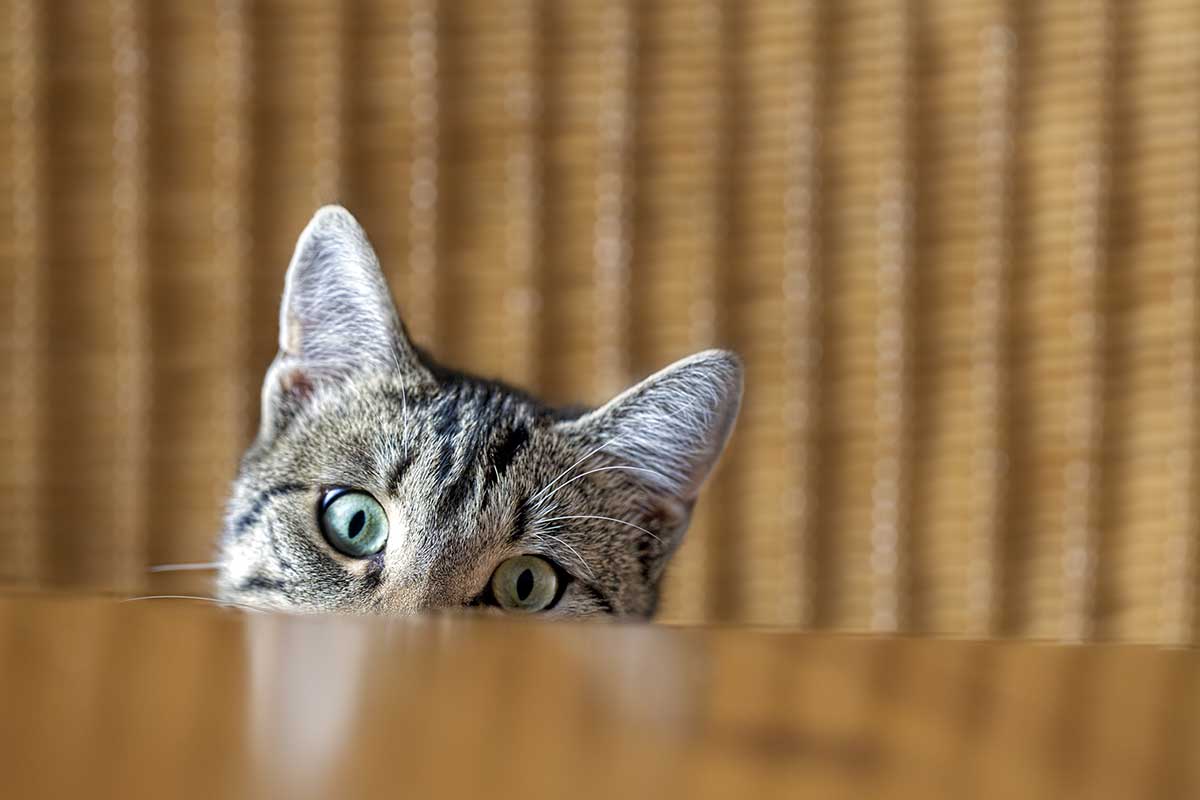How cats play varies between kitties, but there are some techniques nearly all share. My cat Seren-Kitty played “gravity experiments,” knocking things off tables, until the past few years. At age 21, she’s finally slowed down, but before that Seren never had an off-switch and was a cat-play maniac from the moment she entered my home.
Her younger cat buddy Karma has taken over the gravity experiments. What’s the deal with knocking stuff off high places, anyway? It really does look like feline research, when the cat tap-tap-taps each item in turn, watches it fall to the floor (CRASH!), and then moves on to the next object on the mantel. Is Kitty just a slow learner? Is this feline entertainment? Or do cats simply like to push our buttons?
HOW CATS PLAY
Adult cats fall into two broad categories—ankle-rubber play fanatics, and kitty lounge acts who love lap-time nap time. Kittens are in a class by themselves. They can turn kitten games into a blood sport, technically termed play aggression. But overall, cat play keeps cats healthy both emotionally and physically.
Kitten development can be measured by the kinds of games kittens play. Earliest games are self-play with paw-waving belly-up postures similar to human infants enthralled by fingers and toes.
Object play develops as soon as the baby can paw, pat, bite, or toddle after objects. Sound and motion stimulate interaction.
Locomotory play means games that involve movement. They can be kitten solo games with objects or invisible targets, the baby’s own tail, or involve others.
Self-directed play includes tail chasing or pouncing on imaginary objects. Once the baby matures a bit, the self-directed games tend to go away unless the kitten is bored with no playmate around.
Social play means plays nice with others—or not so nice. By the time a kitten reaches four weeks of age, she practices pounce and stalk techniques, learns to grapple and bunny kick with rear paws, and boxer-slaps with claws withheld. Social play peaks at 9 to 16 weeks of age and decreases thereafter as the cat matures.
Why Cats Play With Gravity
Based on the above cat-egories, I think it’s clear why cats enjoy gravity games. Scientists used to say play (in people and animals) served as a method for youngsters to practice grown-up skills they’d need as adults. But they noticed that animals—just like people—continue play even when it doesn’t serve that evolutionary purpose. Even feral cats and wild kitty species play once they grow up, and Gravity Experiments fall into several fun feline faves. Here’s why cats enjoy playing gravity games.
- Gravity games refine paw-swat coordination and tones muscles and trims down tubby tabbies when they must climb to reach attractive targets.
- Kittens and cats learn consequences through play. Interaction with objects teaches them about the world, and that paw-swats make objects fall to the floor with a satisfying SPLAT!
- Fun and games relieve kitty stress. And humans watching cats have fun can reduce our own anxiety—as long as the kitty play is “legal.”
- Play strengthens social bonds. That means it builds friendships between pets—and between you and your cat.
- Gravity games garner lots of attention. When you laugh, yell, become hysterical over paw-patted broken objects, and chase kitty around the house—mee-WOW, that’s value added to the game!
Life’s too short to stress all the time. Play is good for us, and if you have cats, gravity happens. Place breakables out of paw-reach, so Kitty can conduct stress-buster gravity experiments safely.
This article was reviewed/edited by board-certified veterinary behaviorist Dr. Kenneth Martin and/or veterinary technician specialist in behavior Debbie Martin, LVT.








